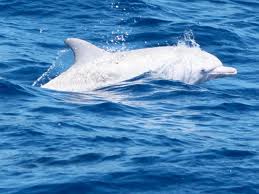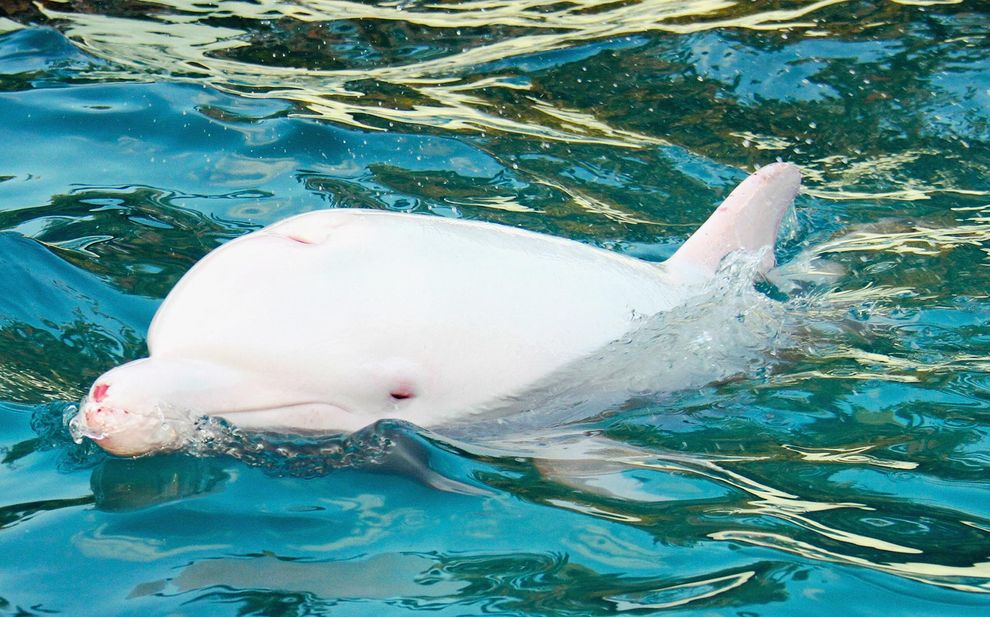Albino Dolphin Seen off of Florida Coast
Screen grab of the YouTube video showing an albino dolphin spotted on Florida’s east coast.
MELBOURNE, Fla. — As rare as snow in Florida, an albino dolphin — one of only 15 spotted in the past half century — popped up in an estuary off Florida’s east coast last month.
Danielle Carter, a volunteer with the Florida Fish and Wildlife Conservation Commission, shot video of the albino bottlenose dolphin on Dec. 10. She told Florida Today the video was shot in Brevard County’s Indian River Lagoon.
FWC officials posted the video on YouTube but won’t say exactly where the dolphin was spotted. They don’t want people harassing the rare marine mammal.
“We thought it was worth sharing due to their rarity but we are not able to give out an exact location for the sake of the animal’s safety,” Brandon Basino, a spokesman with the Fish and Wildlife Research Institute, said via email. “We did not ask for a specific location for this very reason.”
[hdplay id=17 height=500 width=710]
[one_fourth]
[/one_fourth]
The two-minute video shows the white dolphin surfacing several times near a shoreline of mangroves. The dolphin is most visible toward the end of the video.
Some 20 species of dolphins, whales and porpoises are known to exhibit albinism. They are a lighter color — sometimes, but not always, white — because they lack melanin pigments in their skin.
But there have been only 14 recorded sightings of albino bottlenose dolphins since 1962, according to the National Oceanic and Atmospheric Administration.
Carter’s would be the 15th sighting.
Not much is know about albino dolphins because of their extreme rarity. They are often referred to as “pink” dolphin because of their coloration but are considered albino.
Most albinism is caused by genetically recessive genes from both parents, NOAA says, though some rare forms are inherited from only one parent.
Albinism is characterized by having white or light skin and hair, plus pink or red eyes. In addition, it can also often cause impaired vision.
“I don’t believe we have enough clinical information to indicate if they are ‘healthy,’ ” Greg Bossart, a veterinary pathologist at the Georgia Aquarium, said via email. “However, albinism may not be an adaptive trait in a wild animal as it makes them more prone to predation for obvious reasons.”
[three_fourth_last]







